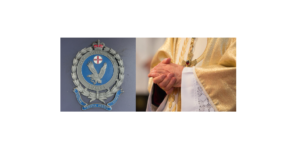Sydney Police Officer and Catholic Priest Charged with Child Abuse Material Offences

A Catholic Priest and Police Officer, both based in Sydney, have been charged with child abuse material offences after an investigation by the Professional Standards Command in May this year into data being stored on and distributed from an electronic device.
62-year old Father Joseph Kolodziej, who is the parish priest at All Hallows Catholic Parish at Five Dock in Sydney’s inner-west, has been charged with possessing child abuse material and using a carriage service (being the internet) to distribute of child abuse material.
He was granted conditional bail to appear in Liverpool Local Court on 13 July 2021.
He has been asked to step down from his position at the parish and its neighbouring primary school while the matter is under investigation.
Police have also arrested a 49-year old sergeant “attached to a specialist command”.
The unnamed officer was charged with possessing child abuse material and is due to appear in Liverpool Local Court on 21 July 2021.
He has been suspended on full pay.
Child Abuse Material Offences
Child abuse material offences are contained in both the Crimes Act 1900 (which applies in New South Wales) and the Criminal Code Act 1995 (which applies across Australia).
What Is Child Abuse Material in New South Wales?
In New South Wales, section 91FB of the Crimes Act 1900 (NSW) defines “child abuse material” as material that depicts or describes, in a way that reasonable person would regard as being, in all the circumstances, offensive, such as:
- A person who is, appears to be or is implied to be, a child as a victim of torture, cruelty or physical abuse
- A person who is, appears to be or is implied to be, a child engaged in or apparently engaged in a sexual pose or sexual activity (whether or not in the presence of other persons)
- A person who is, appears to be or is implied to be, a child in the presence of another person who is engaged or apparently engaged in a sexual pose or sexual activity, or
- The private parts of a person who is, appears to be or is implied to be, a child.
In determining whether reasonable persons would regard particular material as being, in all the circumstances, offensive, the following factors are taken into account:
- The standards of morality, decency and propriety generally accepted by reasonable adults
- The literary, artistic or educational merit (if any) of the material, and
- The journalistic merit (if any) of the material, being the merit of the material as a record or report of a matter of public interest
- The general character of the material (including whether it is of a medical, legal or scientific character)
Private parts are a person’s genital area or anal area, or the breasts of a female person.
Under the definition, a ‘child’ is a person under the age of 16 years.
The offence of disseminating, possessing or producing child abuse material in NSW
Disseminating, possessing or producing child abuse material is an offence under section 91H of the Crimes Act 1900 (NSW) which carries a maximum penalty of 10 years in prison.
To establish the offence, the prosecution must prove beyond reasonable doubt that:
- You possessed, disseminated or produced material, and
- The material was child abuse material.
‘Possession’ includes physical custody or control of material or data.
‘Dissemination’ includes:
- Sending, supplying, exhibiting, transmitting or communicating to another
- Making available for access by another, and
- Entering an agreement or arrangement to do so.
‘Production’ includes:
- filming, photographing, printing or otherwise making,
- altering or manipulating, and
- entering an agreement or arrangement to do so.
Child abuse material charges cover:
- Filming, photographing, printing or otherwise making child abuse material,
- Altering or manipulating any image for the purpose of making child abuse material, and
- Initiating or entering into any agreement or arrangement to any of the above.
Defences to child abuse material offences in NSW
Defences to the charge of disseminating, possessing or producing child abuse material include that:
- You did not know, and could not reasonable have known, that you possessed, disseminated or produced it,
- Your conduct benefited the public through law enforcement or administration, or the administration of justice, and did not extend beyond it,
- The material received a classification for publication,
- The use of the material was approved by the Attorney-General for research, or
- The material depicts you and would not be child abuse material in the absence of your image.
An additional defence is where you received the material unsolicited and took reasonable steps to get rid of it upon becoming aware of its nature.
Legal exception in NSW
A legal exception to child abuse material charges is that:
- The possession of the material occurred when you were under 18, and
- A reasonable person would consider the possession acceptable considering:
- The nature and content of the material,
- The circumstances whereby you came to possess it,
- The age, vulnerability and circumstances of the child depicted,
- Your age, vulnerability and circumstances, and
- The relationship between you and the child depicted.
Using a Carriage Service for Child Pornography or Child Abuse Material in Australia
Section 474.22 of the Criminal Code Act 1995, which applies across Australia, makes it a criminal offence punishable by up to 15 years in prison to:
- Access child abuse material,
- Cause child abuse material to be transmitted,
- Transmit, make available, publish, distribute, advertises or promote child abuse material, or
- Solicit child abuse material.
There is a further offence under s474.22A of the Code regarding the possession or control of child abuse material via a carriage service, which applies whether a person intended to access the material or not.
Section 471.19 prohibits the use of a carriage service – such as the post or the internet – for child pornography, while section 471.20 prohibits possessing, controlling, producing, supplying or obtaining child abuse material for use through a carriage service.
Legal exception in Australia
A person is not criminally responsible if their conduct is deemed to be of public benefit, which means:
- Necessary for, or of assistance in enforcing a law of the Commonwealth, a State or a Territory,
- Necessary for monitoring compliance with, or investigating a contravention of, a law of the Commonwealth, a State or a Territory,
- Necessary for the administration of justice,
- For the purpose of conducting scientific, medical or educational research that has been approved by the Minister for Justice and Customs in writing, or
Required for the manufacturing or development, or updating of content filtering technology.
Receive all of our articles weekly
Related Articles
RELATED LEGISLATION
- Section 91FB Crimes Act 1900 | Meaning of Child Abuse Material
- Sections 91H Crimes Act 1900 | Produce, Disseminate, Possess Child Abuse Material
- Section 474.19 Criminal Code Act 1995 | Using Carriage Service for Child Pornography
- Section 474.20 Criminal Code Act 1995 | Possess Control Supply Obtain Child Pornography through Carriage Service
- Section 474.22 Criminal Code Act 1995 | Use Carriage Service for Child Abuse Material








